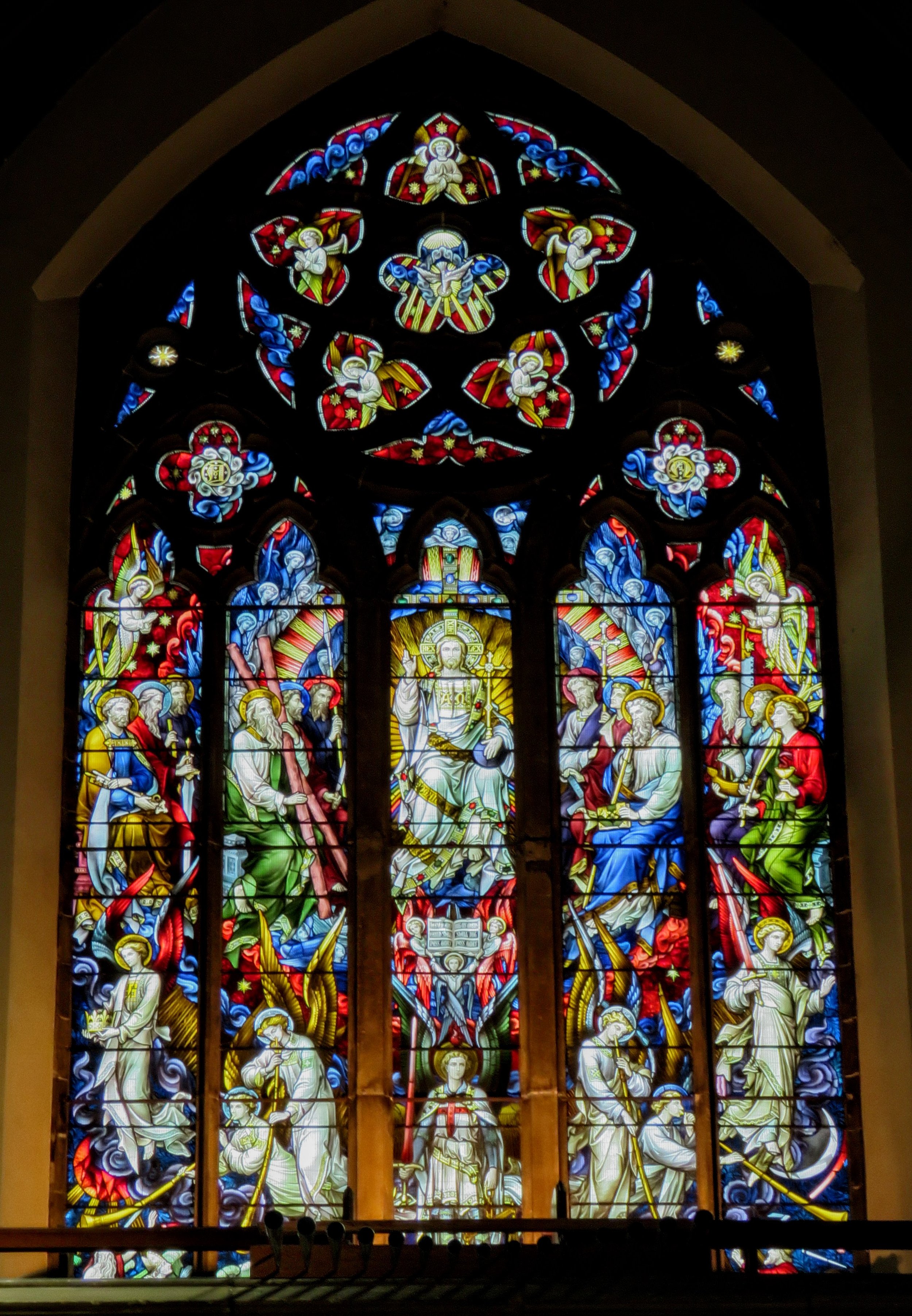A Lazy Day with the Best Cocktail
Day 14: Relaxing in Inverness
A consequence of trying to see as much as possible on our trip to Scotland was a constant rush from the start to the day to sundown. As we were spending three nights in Inverness, Mom and I decided to make Day 14 a slow, relaxing day in Inverness. We took care of some laundry and completed the Rick Steves' walking tour of Inverness. The evening ended at the White House, a restaurant with the best cocktail of the trip and my first flip, "Fruit of the Forest."
St. Andrews (of Inverness)
The Cathedral began as the Mission in 1853, on the opposite side of the River Ness. Bishop Robert Eden decided that the Cathedral for the united Diocese should be in Inverness and in July 1862 excavations for the new Cathedral began, to plans by Alexander Ross, which were to prove to be his masterpiece. The foundation stone of this, the first new Cathedral to be completed in Great Britain since the Reformation, was laid in 1866 by the Archbishop of Canterbury, and the Cathedral was opened for public worship in 1869.
The Cathedral is built of Red Tarradale Stone, with a Nave of five bays divided by columns of Peterhead granite. The High Altar and Reredos are of Caen stone. The panels in the Reredos are: the Agony in the Garden; the Crucifixion; and the Resurrection. The Pulpit is of Caen stone and green marble and rests on short columns of Abriachan granite.
The white marble Angel Font is a copy of the Kneeling Angel Font by the Danish sculptor Thorvaldsen in Copenhagen, although the face is that of Mrs Learmouth, wife of General Learmouth who gave it. There are 11 bells by Warner, restored in memory of Bishop Duncan MacInnes (1953-70).
The Cathedral is a living and vibrant place, the congregation that worships here is drawn from across the local community and shares it’s fellowship with people from across the diocese and beyond.



Inverness Castle
Inverness is located at the north-eastern end of the Great Glen, a line of five lochs extending from Fort William in the south-west and which has historically been an important artery of trade and movement through the otherwise inaccessible Highland massif. Unsurprisingly then a fortification has existed here since at least the sixth century AD when records indicate that a visit was made by St Columba to the fortress of the Pictish King Brude. The next record dates from 1040 when Macbeth reportedly murdered King Duncan at a castle on Auld Castlehill (a couple of miles to the south from the modern city). Macbeth's successor, Malcolm III (Malcolm Canmore), built the first known fortification on the site of the current castle in the mid-eleventh century. The nature of this structure is uncertain but was probably an earth and timber fortification and was probably contemporary with a rampart and ditch built to protect the town. The castle was substantially rebuilt in stone by David I (1124-53) and concurrently he made Inverness a Royal burgh. In 1163 his successor, Malcolm IV (1153-65) appointed Shaw MacDuff as hereditary Governor of the castle for his services in suppressing a rebellion in Moray. In 1263 upgrades were made to the castle to prepare it for a potential Norwegian invasion although ultimately Inverness was not attacked at this time.
~Castles for Battles (please follow the link for further history)
View from the Top



Inverness Castle Viewpoint
The Castle Viewpoint visitor attraction in Inverness offers fabulous 360 degree views of the Highland Capital and the surrounding scenery.
Enjoy the narrated drone footage that provides a birds-eye perspective of the City, and highlights many of the interesting landmarks to look for from the viewing platform. Climb the tower to find out more about some of the intriguing myths and legends associated with the City. Discover the tale of the Brahan Seer, the legendary 17th century Highland mystic who made many a prediction that came to pass, and learn how St Columba met and banished a monster from the River Ness, could this have been the first sighting of Nessie, the Loch Ness Monster?
Finally, take in the spectacular vista looking out across the city of Inverness and beyond, from our fantastic viewing platform.






Inverness Museum & Art Gallery
The museum galleries explore the fascinating history of the Highlands and its people. Follow the museum’s timeline to discover how the unique highland landscape was formed. Find out about the Picts and their beautiful carved stones, the world wide links of medieval Inverness and the importance of Gaelic language and culture. In the upstairs galleries the story continues with the Stuarts and Bonnie Prince Charlie, music, the stunning Inverness silver collection and ends with the modern city of Inverness.
There are lots of things to do – feel the weight of the Achavrail bronze armlet, play Merells or Hnefetafl, learn how to say some Gaelic words and phrases or wrap yourself up in an 18th century style highland kilt. The Highland Photographic Archive held within the museum is responsible for preserving and cataloguing negatives and photographs from all over the Highlands and to then make them accessible to all. The archive is now home to well over 100,000 negatives and prints which relate to most areas of the highlands but the majority are from Inverness and the surrounding area.



The Sites of Inverness
The rest of the day we took a leisurely walk through the city following the walking tour mentioned in Rick Steve's book on Scotland.












Dinner & Drinks
If you're ever in Inverness, stop at the White House. Their special, both the dinner and cocktail, of the evening was fantastic. I had a "Fruits of the Forest" and the Halibut. Mmmm.... fond memories.









